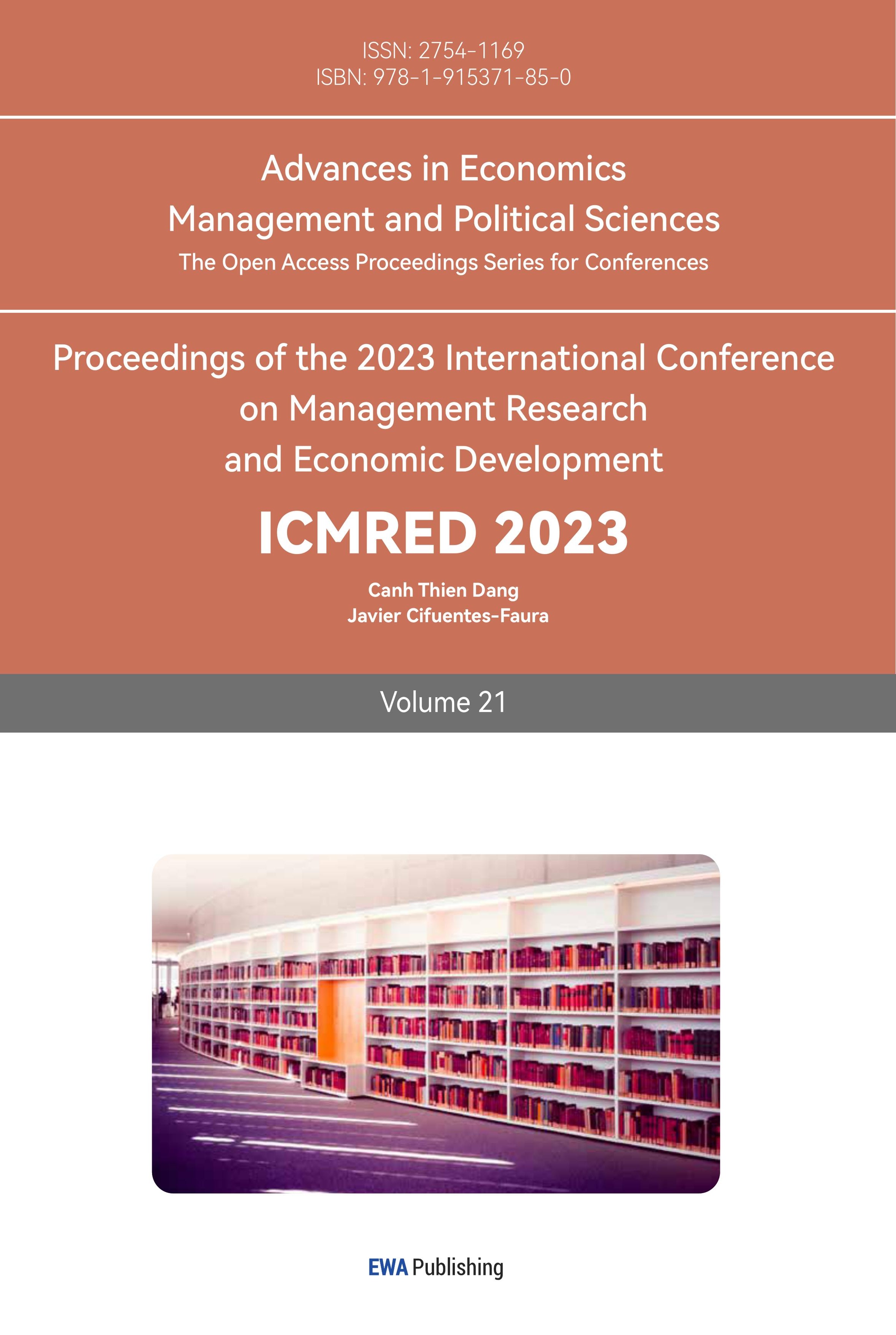References
[1]. Perez de las Heras, B. (2022). The 'Fit for 55' Package: Towards More Integrated Climate Framework in the EU. Romanian Journal of European Affairs, 22(2), 63-78.
[2]. Regulation (EU) 2022/2560 of the European Parliament and of the Council of 14 December 2022 on foreign subsidies distorting the internal market, OJ L 330/1 (2022). http://data.europa.eu/eli/reg/2022/2560/oj.
[3]. Fang, M. M., & Zhou, W. (2022). Greening the road: China’s low-carbon energy transition and international trade regulation. Leiden Journal of International Law, 35(2), 357-378.
[4]. Ru, D., & Yiqian, X. (2022). Emerging rules on cross-border subsidies: typological analysis and proposals for china's approach. Journal of WTO and China, 12(2), 45-79.
[5]. Luja, R. (2021). The foreign subsidies regulation: countering state aid beyond the european union. European State Aid Law Quarterly (ESTAL), 20(2), 187-199.
[6]. Kociubinski, J. (2022). The proposed regulation on foreign subsidies distorting the internal market: the way forward or dead end?. European Competition and Regulatory Law Review (CoRe), 6(1), 56-68.
Cite this article
Liang,Y. (2023). Targeted Response from China's New Energy Vehicle Enterprises Analysis Based on Article 6 of FSR. Advances in Economics, Management and Political Sciences,21,269-274.
Data availability
The datasets used and/or analyzed during the current study will be available from the authors upon reasonable request.
Disclaimer/Publisher's Note
The statements, opinions and data contained in all publications are solely those of the individual author(s) and contributor(s) and not of EWA Publishing and/or the editor(s). EWA Publishing and/or the editor(s) disclaim responsibility for any injury to people or property resulting from any ideas, methods, instructions or products referred to in the content.
About volume
Volume title: Proceedings of the 2023 International Conference on Management Research and Economic Development
© 2024 by the author(s). Licensee EWA Publishing, Oxford, UK. This article is an open access article distributed under the terms and
conditions of the Creative Commons Attribution (CC BY) license. Authors who
publish this series agree to the following terms:
1. Authors retain copyright and grant the series right of first publication with the work simultaneously licensed under a Creative Commons
Attribution License that allows others to share the work with an acknowledgment of the work's authorship and initial publication in this
series.
2. Authors are able to enter into separate, additional contractual arrangements for the non-exclusive distribution of the series's published
version of the work (e.g., post it to an institutional repository or publish it in a book), with an acknowledgment of its initial
publication in this series.
3. Authors are permitted and encouraged to post their work online (e.g., in institutional repositories or on their website) prior to and
during the submission process, as it can lead to productive exchanges, as well as earlier and greater citation of published work (See
Open access policy for details).
References
[1]. Perez de las Heras, B. (2022). The 'Fit for 55' Package: Towards More Integrated Climate Framework in the EU. Romanian Journal of European Affairs, 22(2), 63-78.
[2]. Regulation (EU) 2022/2560 of the European Parliament and of the Council of 14 December 2022 on foreign subsidies distorting the internal market, OJ L 330/1 (2022). http://data.europa.eu/eli/reg/2022/2560/oj.
[3]. Fang, M. M., & Zhou, W. (2022). Greening the road: China’s low-carbon energy transition and international trade regulation. Leiden Journal of International Law, 35(2), 357-378.
[4]. Ru, D., & Yiqian, X. (2022). Emerging rules on cross-border subsidies: typological analysis and proposals for china's approach. Journal of WTO and China, 12(2), 45-79.
[5]. Luja, R. (2021). The foreign subsidies regulation: countering state aid beyond the european union. European State Aid Law Quarterly (ESTAL), 20(2), 187-199.
[6]. Kociubinski, J. (2022). The proposed regulation on foreign subsidies distorting the internal market: the way forward or dead end?. European Competition and Regulatory Law Review (CoRe), 6(1), 56-68.









